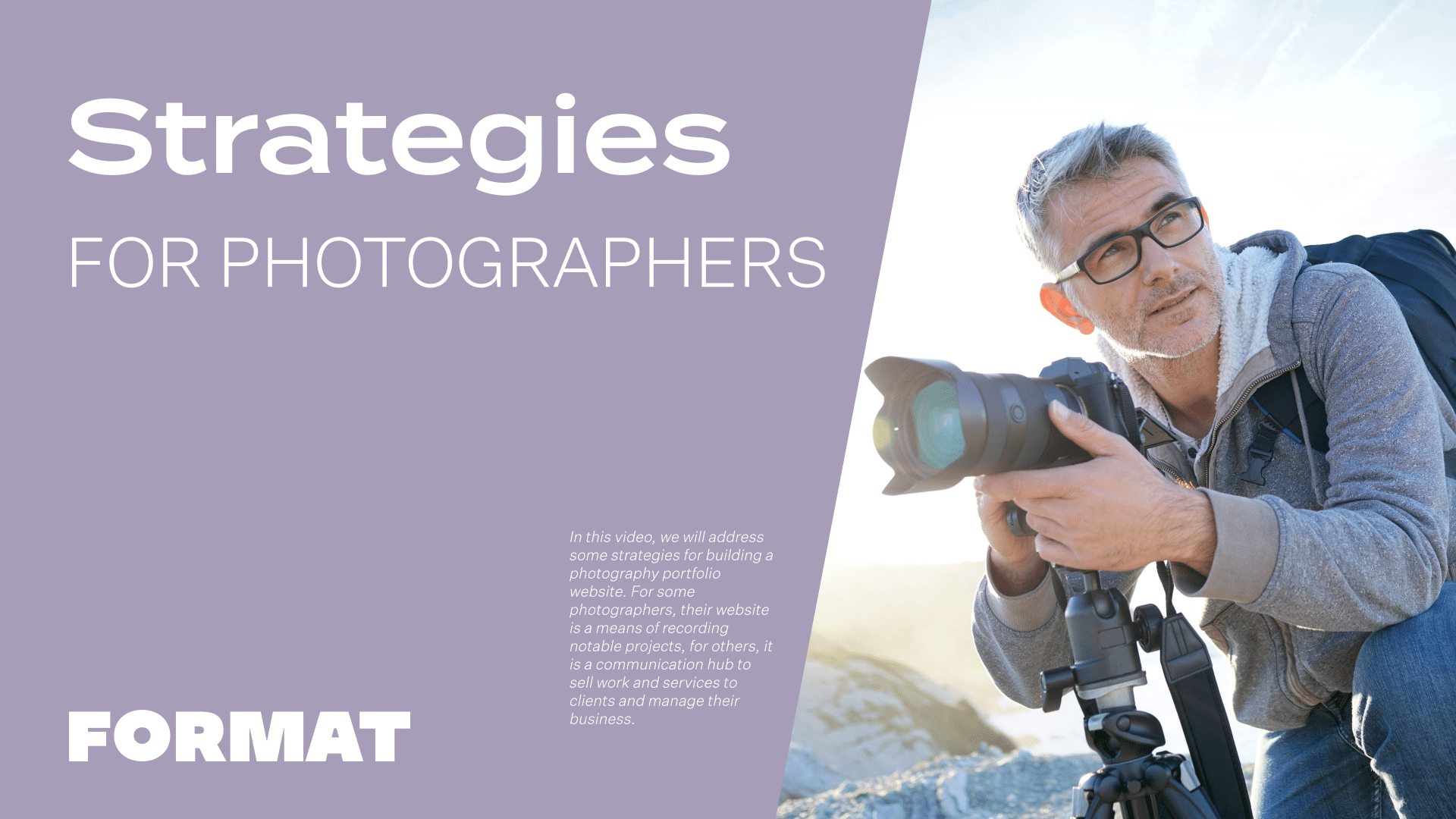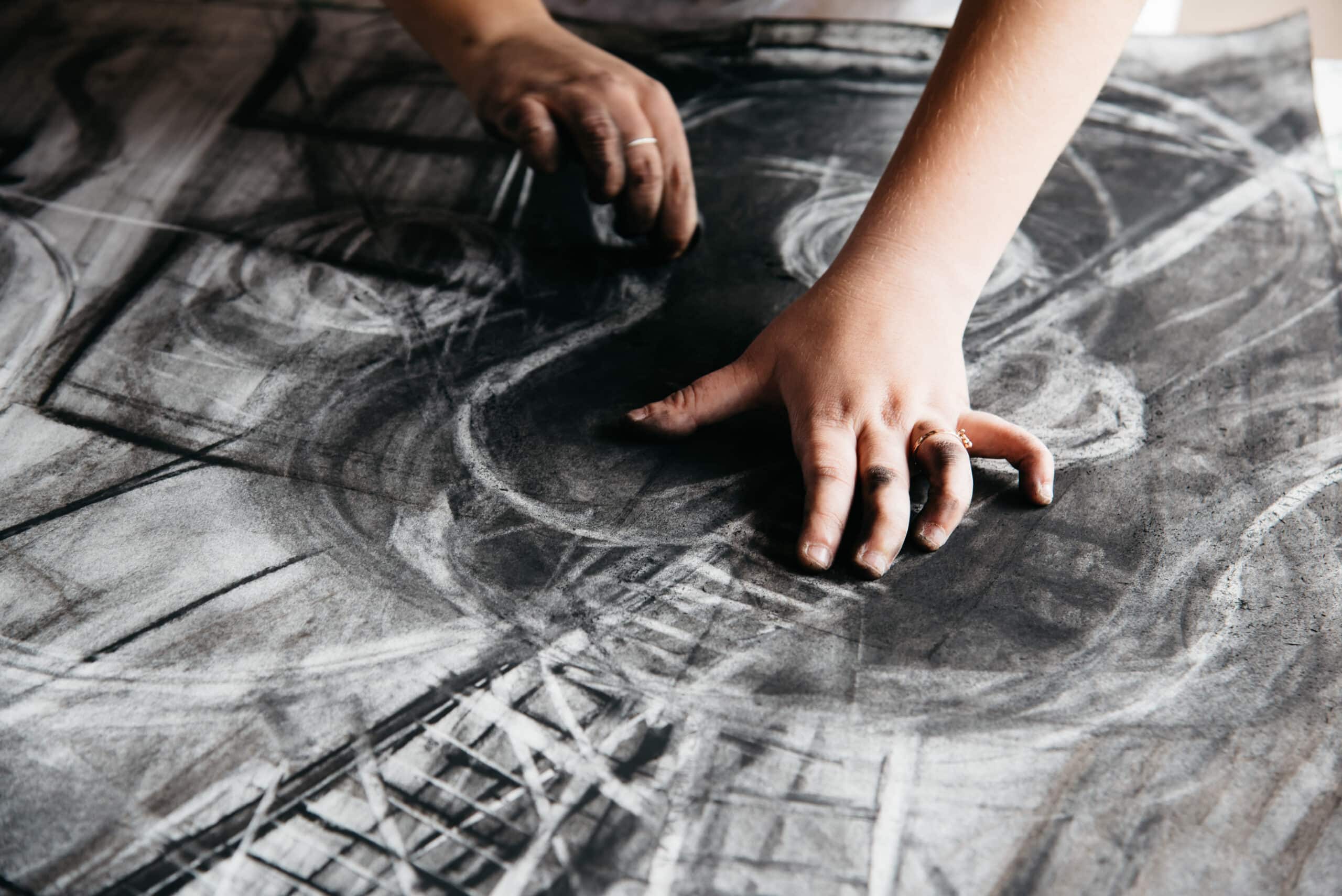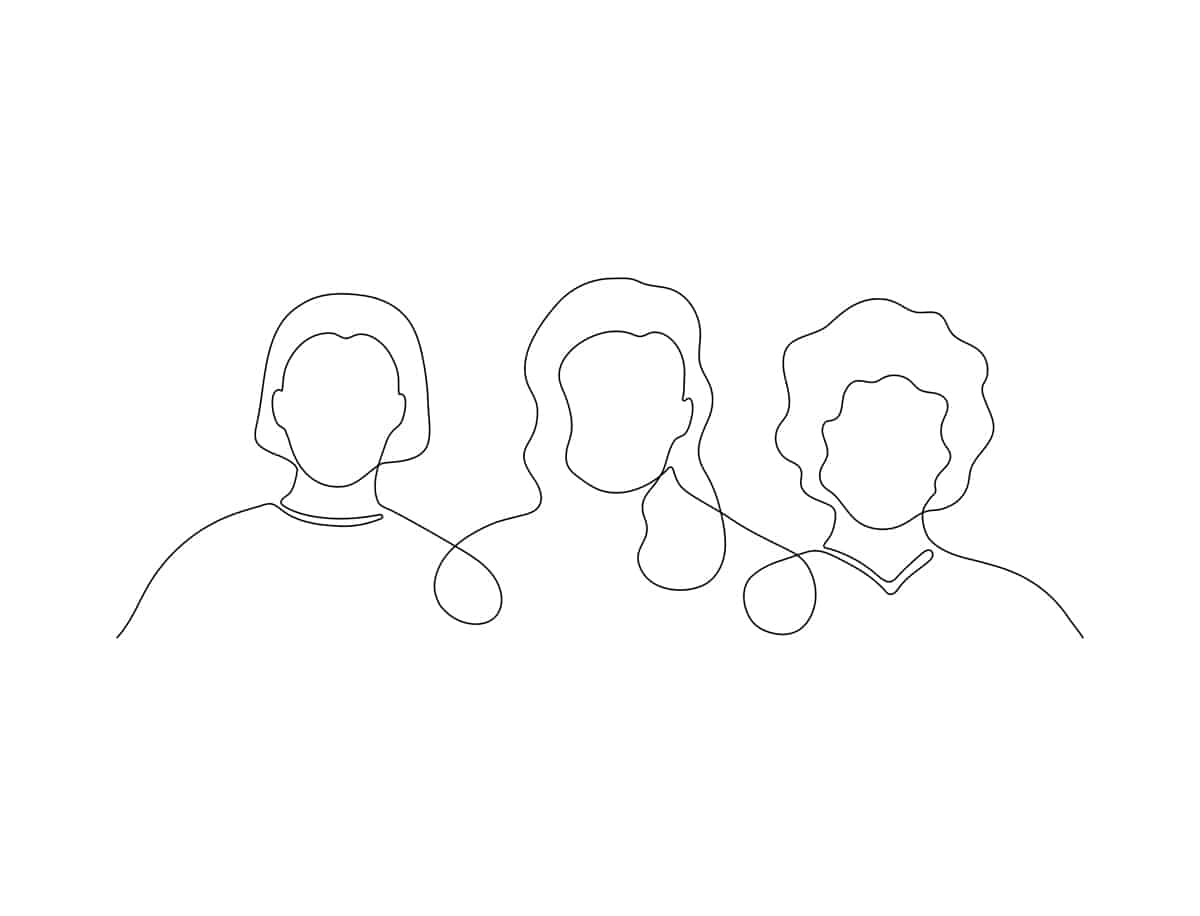Als Fotografin oder Fotograf ist deine Website ein professionelles Zentrum, um dein Können zu zeigen. Für einige Fotografen ist ihre Website ein Mittel, um bemerkenswerte Projekte festzuhalten - für andere ist sie ein Kommunikationszentrum, um Arbeiten und Dienstleistungen an Kunden zu verkaufen und ihr Geschäft zu verwalten. Unabhängig davon, welche Art von Fotografie du betreibst, gibt es einige wichtige Faktoren, die du bei der Erstellung deiner Portfolio-Website berücksichtigen solltest:
1. Erstelle eine kurze Navigation, die deine Schlüsselkompetenzen oder Dienstleistungen widerspiegelt
Die effektivsten Websites sind die, bei denen die Fotografen ihr Website-Menü auf die wichtigsten Fähigkeiten oder Dienstleistungen abstimmen, die sie in ihrem Portfolio präsentieren wollen. Wenn deine Website z. B. deine fotografischen Dienstleistungen für Branding und Porträts verkauft, solltest du in deinem Menü Links zu Branding und Porträts einfügen. Wenn dein Website-Menü die Geschichte deiner Fähigkeiten erzählt, zeigt das, dass du auf deinem Gebiet spezialisiert bist.
2. Verknüpfe alle deine Projekte über eine Sammelseite
Mit einer Sammelseite kannst du Seiten mit ähnlichen Serien, Aufnahmetypen oder Dienstleistungen zusammenfassen. Eine Sammlungsseite ist eine Seite mit Bildlinks. Sie ist eine gute Möglichkeit, um viele Unterprojekte unter einem einzigen Menüpunkt zu präsentieren. Sie sind aussagekräftiger als ein Dropdown-Menü, weil die Besucher deiner Website einen schnellen Überblick über deine besten Bilder aus jedem Projekt erhalten. Außerdem sind sie auf dem Handy sehr benutzerfreundlich.
3. Wähle ein Thema für dein bestes Seherlebnis
Die Themen auf Format bestimmen das Layout des Menüs, der Galerieseiten und der Sammlungsseiten deiner Website. Wenn du ein Theme auswählst, solltest du dir Gedanken über die optimale Darstellung deiner Website machen. Für Websites mit Kunstfotografie empfehlen wir zum Beispiel häufig Themes mit einem großen vertikalen oder horizontalen Bildlauf wie Ora oder Horizon. Das vermittelt das Gefühl, die Arbeit in einer Ausstellung zu sehen.
Für kommerziellere Websites oder Websites mit vielen Bildern auf jeder Seite empfehlen wir Kachelthemen wie Amazon oder Slate. Kachelthemen ermöglichen es den Besuchern deiner Website, sich schnell einen Überblick über deinen Stil und dein kompositorisches Gespür zu verschaffen.
4. Benutzerdefinierte Seiten für Kontakt, Über uns, Preise und Dienstleistungen
Benutzerdefinierte Seiten sind genau das, wonach sie klingen: anpassbare Seiten, auf denen du mit verschiedenen Inhaltsblöcken dein eigenes Layout erstellen kannst. Fotografen verwenden benutzerdefinierte Seiten häufig für Kontakt- und Überseiten sowie für andere kundenorientierte Informationen wie Preise, Dienstleistungen und mehr.
Wenn du zum ersten Mal eine benutzerdefinierte Seite erstellst, hast du die Möglichkeit, von Grund auf neu zu beginnen oder eine Vorlage zu verwenden - beide Optionen sind vollständig anpassbar.
Eine großartige Funktion der benutzerdefinierten Seiten ist die Möglichkeit, ein Bilder-Set oder eine Bildergalerie in eine Seite einzufügen. So kannst du Galerieseiten mit einem anderen Layout als das Thema deiner Website erstellen.
Wenn du diese Seiten erstellst, solltest du daran denken, wie die Absätze und Abschnitte für die mobile Anzeige angeordnet werden. Wenn du an einer Seite arbeitest, klicke auf "Design bearbeiten" und schalte auf die mobile Anzeige um, um dein Seitenlayout zu überprüfen.
5. Workflow für Kundengalerien, Dateiübertragungen und Kundenverwaltung
Arbeitsablauf ermöglicht es dir, private Bildergalerien mit deinen Kunden und Kontakten zu teilen. Das ist eine großartige, professionelle Art, deine Bilder zu teilen, und ermöglicht es dir, deiner Kommunikation das gleiche Erscheinungsbild wie deiner Website zu geben. Schau dir unser Tutorials zum Arbeitsablauf um mehr über alle Kundenmanagement-Tools zu erfahren.













